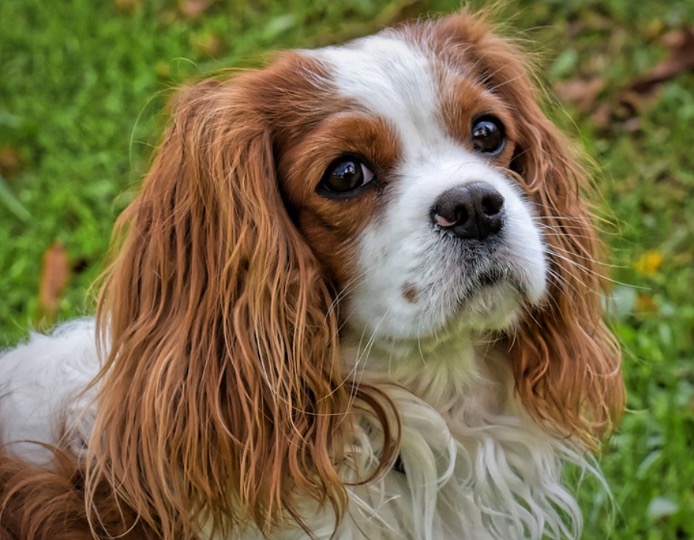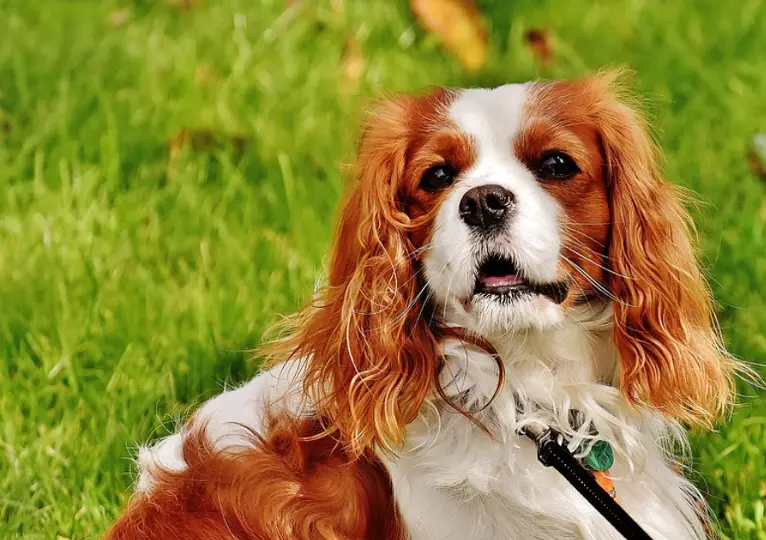Table of Contents
Cavalier King Charles: What You Need To Know
A cavalier king charles is the domestic dog breed that belongs to the kingdom of Animalia, phylum Chordata, and class Mammalia. Its genus is Canis, and its species is Canis lupus. Its length is up to 30 to 32 cm, and it weighs about 5.9 to 8.2 kg. It lives in a domesticated habitat, with a lifespan of up to 9 to 14 years.

What is Cavalier King Charles?
The Cavalier King Charles is a tiny dog breed that originated in the United Kingdom. It is a show dog and a therapy dog, and it is one of the largest breeds in the ‘toy’ category. It’s also a popular companion and pet, and it’s been linked to British royalty for a long time. The larger and longer muzzles of Cavalier King Charles Spaniels separate them from the extremely similar King Charles Spaniel.

Cavalier King Charles Appearance
Cavalier King Charles spaniels are tiny dogs that weigh between 13 and 18 pounds (5.9 and 8.2 kg) and stand 12 to 13 inches (30 to 32 centimetres) tall. Their coats are silky smooth, and their tails are sleek and undocked. Typical of most spaniel breeds, the breed features a domed head, big eyes, and long, dangling ears. Much of the history of King Charles Spaniels and Cavalier King Charles is shared.
King Charles Spaniels, on the other hand, were later crossed with pugs and other short-muzzled dogs, resulting in their separation as distinct breeds. The Cavalier King Charles is somewhat bigger than the Cavalier King Charles, in addition to having a longer snout.

The Cavalier King Charles has a silky and smooth medium-length coat. Adults have thicker hair, and their ears, paws, and tails frequently acquire feathering. The Blenheim, a deep brown hue on white, is one of four colour variations of Cavaliers. The ‘tricolour’ Cavalier, which has black patterns on a white coat with tan around its eyes, is another option.
The ‘black and tan’ variant is similar to the ‘tricolour’ but has more tan and less white. Finally, a deep reddish-brown hue with no white marks distinguishes ‘ruby’ Cavaliers. Each of these types has a distinct past. The Duke of Marlborough, for example, named the Blenheim variety after his home, Blenheim Palace.
Cavalier King Charles History
The Cavalier King Charles is a breed of Cavalier that originated in East Asia and made its way to Europe in the 1500s. They have a lengthy history of being associated with the British monarchy.
They were named after King Charles II of Great Britain and Ireland, who popularised the breed along with other members of the royal family over the years. Japanese officials presented early variants of the breed to European aristocracy.
They are considered to have descended from the same progenitor as the Pekingese and Japanese Chin dogs. Several contemporary breeds were developed from these dogs that immigrated from Asia, including the Cavalier King Charles Spaniel and the stouter, shorter-nosed King Charles Spaniel.
Originally employed for hunting, the breeds that formed the modern-day Cavalier King Charles were ultimately phased out in favour of bigger varieties. Following King Charles’ death, the popularity of these Spaniels faded, and the breed was changed in many areas by cross-breeding with flat-faced breeds.
Long-nosed spaniels were nearly extinct when they were represented in artwork from earlier eras. The Kennel Club recognised the breed in 1945 after devoted resurrection attempts over the previous 100 years. It eventually found its way to America, where the American Kennel Club recognised it in 1995, and it is still quite popular today.
Cavalier King Charles as Pet
Due to their amiable nature and tiny stature, Cavalier King Charles are popular pets. This enables them to live in tiny flats and houses. They get along well with children and other pets, especially if they’ve been socialised from an early age. They, like other dogs, demand a lot of attention and should not be left alone for lengthy periods of time.
They are not known for being excellent guard dogs because of their small stature, but they will bark to notify their masters of the presence of others. Individuals have an average lifetime of 9-14 years, and females generally give birth to around 5 puppies.
Fun Facts About Cavalier King Charles!
The Cavalier King Charles Spaniel has a regal background and has been linked with the British monarchy for many years. It is also one of the most popular pet breeds in the Western world.
Bred to be Happy
The Cavalier King Charles is a well-mannered dog who is nearly always seen wagging its tail. This isn’t a coincidence. As a common show dog, breeders devote close attention to the breed’s characteristics. Indeed, a tail that is nearly continuously moving when the dog is moving is a popular feature to select for.
The Royal Decree
King Charles, who ruled England from 1660 to 1685, was the inspiration for the Cavalier King Charles Spaniel. He was believed to be so devoted to his spaniels that he would take two or three with him nearly everywhere.
As a result, he decreed that the breed be permitted in all public spaces, including the House of Commons. Despite the fact that this edict still remains, it has not been put to the test in recent years.
Cavalier King Charles Citations
- Echocardiographic Evaluation of the Mitral Valve in Cavalier King Charles Spaniels. Animals (Basel) . 2020 Aug 19;10(9):1454.
- Primary secretory otitis media in Cavalier King Charles spaniels. Vet Clin North Am Small Anim Pract . 2012 Nov;42(6):1137-42.
- Hemostatic function in Cavalier King Charles Spaniels assessed using thromboelastography. Vet Clin Pathol . 2019 Dec;48(4):636-644.







